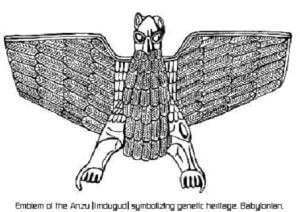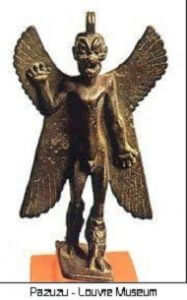 2
2

Product quality: deliberate "cartridges"
 02. 05. 2024
02. 05. 2024



 2
2

 02. 05. 2024
02. 05. 2024
 1
1

 01. 05. 2024
01. 05. 2024

 30. 04. 2024
30. 04. 2024

 2
2
 27. 02. 2024
27. 02. 2024

We consider the most advanced race in the universe Kadištu. Their task is to ensure the creation and expansion of intelligent races in the universe, thus fulfilling the function of God-Creator. We can call them too God's angels. Even though they control the most advanced technologies (gene manipulation and cloning), they do not act as missionaries and supervisors, and they leave everything to free development after completing their task. Kadišta usually do not interfere with the development of traditional old races, such as Gina'abul (reptiles), who were the first settlers of the Earth.
Type Homo, which is now the dominant species on Earth, is genetically derived from these Gina´abul reptiles and a combination of genes from various other races. There are a number of complex reactions and procedures at play, which Parks explains in detail in his books. Name Kadištu refers to the Latin word caduceus, a well-known medical symbol - a stick with two snakes wrapping it - a truly perfect image of the DNA molecule. Such a stick was allegedly worn by the Greek God of Hermes, the Greek name for her kerukeion (notification wand). However, this symbol already appears in ancient Egypt and was probably taken from even older cultures there as well.
The cadets do not live in our 3D dimension, but come from a higher dimension, called Angal, hence the connection with the angels. They have the same function as elsewhere original source, the primary creator and similar terms expressing the role of God-Creator. Of the other primary source races, it is necessary to mention Abgal - subdued to Cadiz that had amphibian genes. They originate from the Gagsisá system (Sírius), and therefore they are called Sírians. If they rarely developed in 3. dimension, it was a race Urmah, also belonging to the group rasa Gina'abul. Female Gina'abul formed a separate group of Amašutum, as designers or priestess of life, inhabiting several areas of the universe (Big Bear, Hydra, Pleiades, Orion).
Earth Amasutum, specially created for this Solar System, was called Ama'argi,
which were cloned according to the pattern from the constellation Ursa Maior (Big Bear). They had tails just like other Amašutum and dark skin. It was a peaceful race and their queen was Dim'mege.
 The Sukkal race, the appearance of birds, differed from these classical races. Compare with the ancient Egyptian gods or with the race mentioned by Corey Goode. sukkal means messenger. In the Sumerian and Asyr-Babylonian tradition, Sukkal is humanoid with a bird's body and large wings on his back. Greek term angelos also means messenger and beings with features similar to those of the Biblical angels.
The Sukkal race, the appearance of birds, differed from these classical races. Compare with the ancient Egyptian gods or with the race mentioned by Corey Goode. sukkal means messenger. In the Sumerian and Asyr-Babylonian tradition, Sukkal is humanoid with a bird's body and large wings on his back. Greek term angelos also means messenger and beings with features similar to those of the Biblical angels.
A similar link to Egyptian mythology (or just a reflection of reality) has Urmah beings, according to the syllabus, it can be translated as a great fighter. It was a race with the body of a lion or a cat (see Sphinx). They formed the official army or heavenly militia Kadistu, who used them to master their opponents.
Another breed similar to today's animals was Kingú, the Akkadian Quingu, the appearance of eagles. They were divided into several different types. The largest were the white Kingú-Babbar (great kings), the race Te (eagles), the Red Kingú (warriors), Ushu (dragons) and the Greens (humanoids). The King-Babbar were the dominant race in the constellation Draco, where they created the Ušumgal race, with which they later moved to the constellation Lyra. Some of them have wings and horns, but not in the solar system.
There were also half-breeds between the King-Babbar and Urmah races, called Imdugud, looking half-eagle and half-lion, as depicted in Sumerian and Akkadian sculptures. (Fig. 4) their pupils were vertical, as in cats, they always had claws. They lived in our solar system about 300.000 years ago, before the Anunna, Anem and Ninmah races were created on the planet Dukú in the constellation Pleiades, from genes discovered on the planet Nanulkara. A special subgroup deployed on planet Earth (KI) was called the Anunnaki. (See Zecharia Sitchin's books)
According to the Bible, the aliens who had intercourse with human women were called Nungal, and the book of Enoch refers to them as observers. Otherwise they were fallen angels.
Dangerous was the Mushgir race, the appearance of winged dragons, created by Ushumgal in the constellation Lyra. (So fairy tales don't invent anything?) The Assyrians were called Pazuzu. Today we can see their appearance on numerous water spouts in cathedrals.
Mimin was a relatively simple genetic product. They come from reprogrammed Mushgir genes, they have smooth skin. There are several species of Mimin from the genes that the Kings created. In essence, it is a race serving male Gina´abul.
Ukubi or Ugubi was a race of monkeys, originally created as food (as our cattle) for the King. Nammu secretly  has improved this race to become autonomous and able to defend itself against the King.
has improved this race to become autonomous and able to defend itself against the King.
Primary people
They were created by combining the genes of the original Gina´abul with the monkey Ugubi genes. Sa´am, who was associated with Parks, was a continuation of what his mother created from apes. The first version of the humanoid (Á-dam) was created from the genes of Ukubi, Ama´argi and the green Kingú, serving on the Edin plain. Kingú themselves did not bear any responsibility for this creation. Later, Sa´am added the Namlu´u genes to mildness the beings of Á-dam. These beings had dark skin first, and the Ama'argi inherited their tail. The Sumerian name for them was SAG-GI-GA, which means black slave. Sa'am then added the King-Babbar white genes, so these creatures got white complexion, so they were named Lu-bar (white man). The word Lú-bara means an independent person, like Lú-bar-ra means alien or alien. This original human race has been improved many times, but it has not been a form of today Homo sapiens. It is likely that their skeletal remains are now referred to by the scientists as the forerunner of the human being who seeks to integrate into the evolutionary line.
Part Three - Anton Parks: Coding of the First Tongues of Humankind